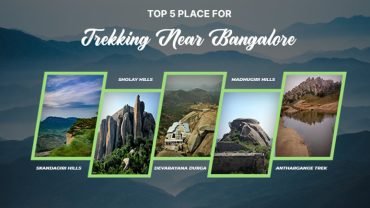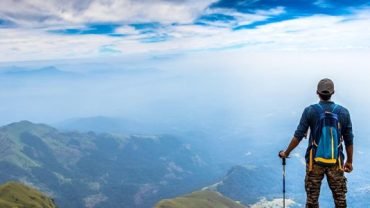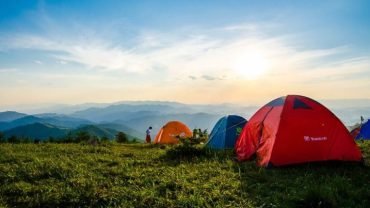Backpacking trip is one of the most rewarding ways to experience the great outdoors, combining the thrill of trekking with the satisfaction of self-sufficient camping. Whether you’re a seasoned backpacker or a newcomer eager to hit the trails, understanding the nuances of backpacking can make a significant difference in your adventure. This comprehensive guide will provide essential tips for backpacking, highlighting how to explore the best trails with native trekking techniques and practices. From gear and preparation to safety and environmental stewardship, these insights will help you maximize your backpacking trip experience. Whether you’re planning a weekend getaway or a longer journey, these tips will ensure your backpacking trip is both enjoyable and successful.
1. Understanding Backpacking Basics
Before delving into the specifics, it’s important to grasp what a backpacking trip entails. Backpacking involves long-distance hiking and camping, often over several days, with all necessary gear carried in a backpack. It requires a blend of physical endurance, self-sufficiency, and outdoor skills.
Key Components of Backpacking:
- Self-Sufficiency: Backpackers need to carry their food, shelter, and other essentials.
- Navigation Skills: Proficiency in using maps, compasses, or GPS devices is crucial.
- Campcraft: Skills for setting up and managing a campsite, including tent pitching and cooking.
- Physical Fitness: Backpacking involves carrying a heavy load over varied terrain, requiring good fitness levels.
2. Essential Gear for Backpacking
Having the right gear is critical to a successful backpacking trip. Here’s a detailed checklist of essential items:
a. Backpack
- Capacity: Choose a backpack with a capacity of 40-60 liters, depending on the length of your trip.
- Fit: Ensure it fits comfortably with adjustable straps and a padded hip belt for weight distribution.
b. Shelter and Sleeping Gear
- Tent: Opt for a lightweight, weather-resistant tent that is easy to set up and pack away.
- Sleeping Bag: Select a sleeping bag rated for the temperatures you’ll encounter.
- Sleeping Pad: A sleeping pad provides insulation from the ground and extra comfort.
c. Cooking and Food Supplies
- Stove and Fuel: A compact, reliable stove with fuel suitable for your cooking needs.
- Cookware: Lightweight pots, pans, and utensils.
- Food: Pack non-perishable, high-energy foods such as trail mix, dehydrated meals, and energy bars.
d. Clothing
- Base Layers: Moisture-wicking base layers to keep you dry and comfortable.
- Insulating Layers: Fleece or down jackets for warmth.
- Outer Layers: Waterproof and windproof jackets to protect against the elements.
- Footwear: Sturdy, comfortable trekking boots with good ankle support and traction.
e. Navigation Tools
- Map and Compass: Essential for navigation, even if you plan to use a GPS device.
- GPS Device or Smartphone: Useful for tracking your route and location.
f. Safety and Emergency Gear
- First-Aid Kit: A comprehensive kit including basics like bandages, antiseptic, and pain relievers.
- Emergency Whistle: For signaling in case of emergencies.
- Multi-Tool or Knife: Versatile for various tasks.
3. Preparation and Planning
Successful backpacking starts with thorough preparation and planning.
a. Research Your Trail
- Trail Information: Study the trail’s distance, elevation, and difficulty level.
- Weather Conditions: Check the weather forecast for your trek dates and prepare for any potential changes.
- Permits and Regulations: Ensure you have any necessary permits and are aware of local regulations and park rules.
b. Physical Conditioning
- Training: Engage in cardiovascular and strength training to build endurance and strength.
- Practice Hikes: Take shorter, practice hikes with a loaded backpack to acclimate yourself to the weight and distance.
c. Itinerary Planning
- Daily Schedule: Plan your daily mileage, rest stops, and campsite locations.
- Emergency Plan: Develop a plan for emergencies, including alternate routes and communication options.
Explore More: kashmir great lakes trek | Dudhsagar trek | kunti betta trek | kuduremukha trek
4. Navigating Trails with Native Trekking Techniques
Native trekking techniques, inspired by traditional and indigenous practices, can enhance your backpacking experience.
a. Leave No Trace Principles
- Minimize Impact: Follow Leave No Trace principles to protect the environment. This includes packing out all trash, avoiding creating new trails, and staying on established paths.
- Respect Wildlife: Observe animals from a distance and avoid feeding them.
b. Traditional Navigation Techniques
- Natural Landmarks: Use natural landmarks such as rivers, mountain peaks, and vegetation patterns for navigation.
- Celestial Navigation: In case of emergency, traditional methods like using the sun or stars can aid in orientation.
c. Traditional Camping Practices
- Campsite Selection: Choose durable campsites away from water sources to prevent soil erosion and protect riparian areas.
- Campfire Practices: Use established fire rings if campfires are permitted, or opt for a portable stove to minimize environmental impact.
5. Safety Considerations
Safety is paramount in backpacking. Here are essential safety tips to follow:
a. Know Your Limits
- Pace Yourself: Set a pace that matches your fitness level and experience.
- Listen to Your Body: Take breaks when needed and stay hydrated.
b. Prepare for Emergencies
- Emergency Contacts: Inform someone of your plans and expected return time.
- Navigation Skills: Be proficient in using maps and compasses, and carry a GPS device as a backup.
c. Weather Awareness
- Monitor Conditions: Be aware of changing weather conditions and adjust your plans accordingly.
- Prepare for Extremes: Pack appropriate gear for extreme temperatures and weather conditions.
6. Enhancing the Backpacking Experience
To make your backpacking adventure even more enjoyable, consider these tips:
a. Embrace the Journey
- Mindfulness: Take time to appreciate the natural beauty around you. Practice mindfulness to enhance your connection with nature.
- Photography: Capture the landscapes and moments of your journey to create lasting memories.
b. Engage with Local Cultures
- Local Insights: If trekking in regions with indigenous or local communities, engage respectfully and learn about their traditions and lifestyles.
- Cultural Sites: Explore historical or cultural sites along your route to enrich your experience.
c. Community and Sharing
- Join Groups: Consider joining backpacking groups or forums to connect with like-minded adventurers and share experiences.
- Share Your Journey: Share your experiences and tips with others through blogs, social media, or community events.
7. Conclusion
Backpacking is an exhilarating way to explore the great outdoors, offering a unique blend of adventure, self-sufficiency, and connection with nature. By understanding the essentials of backpacking gear, preparation, navigation, and safety, you can ensure a successful and enjoyable trip. Embracing native trekking techniques and environmental stewardship will further enhance your experience, allowing you to explore the best trails while respecting and protecting the natural world. So gear up, hit the trails, and embark on a backpacking adventure that will leave you with unforgettable memories and a deeper appreciation for the beauty of our planet.




Comment (0)